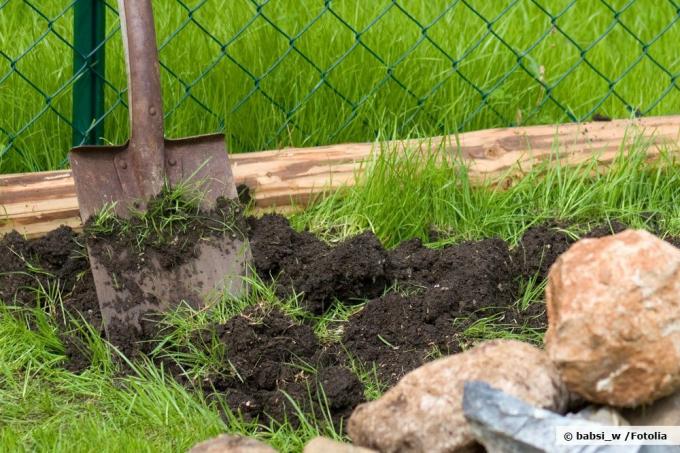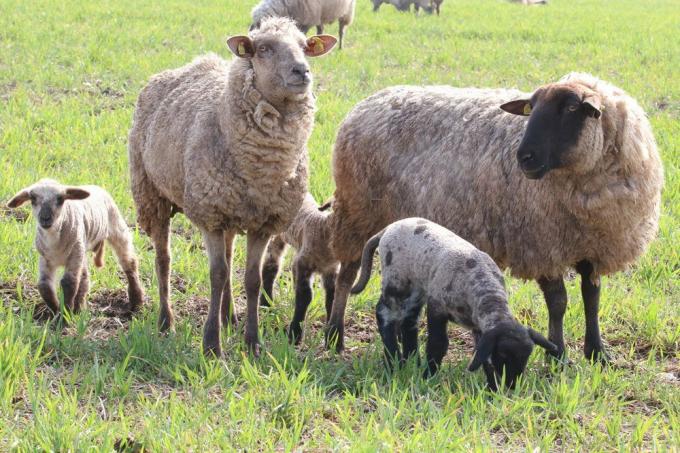
table of contents
- Remove the sod
- Mechanical process
- Cut off the sod
- Dig up
- Peeling with machine assistance
- Digging with machine support
- Chemical process
- Biological methods
- Cover
- Intense grazing
Reasons to have an existing race to remove, there are innumerable. Be it, for example, to lay out a terrace, to create a vegetable patch, or simply to replace a weed-infested lawn with new, lush green. Here you can find out everything you need to know about the possible ways to clear a lawn. We will also tell you how to remove the sod step by step in the most common way of working and create a good basis for all subsequent work.
Remove the sod
There are various ways of removing the grass quickly, easily and thoroughly at the same time. Depending on local conditions, time frames and also technical requirements, one or the other variant can score with its respective advantages.
Note: If you follow the explanations of landscape gardeners, do-it-yourself forums or even classic advisors, the large number of variants initially seems hardly manageable. On closer inspection, however, all individual solutions can be based on a handful of methods reduce each in the nature of their approach to eliminate the sod, blatantly differentiate.
A distinction is made between three different variants for removing lawn and root layer:
- Mechanical process
- Chemical process
- Biological methods
If you look at the individual processes in detail, they result from the categorizations that have already been made further differences, which even within a category have significantly different orientations and possible uses open.

Note: Some of the methods presented seem almost strange at first. Because the use of tarpaulins or animals seems rather strange for the lawn at home. However, certain framework conditions regarding the timeline or the available Possibilities in individual cases mean that these methods are not completely dismissed out of hand should.
Mechanical process
Grass and roots are removed by cutting, lifting, peeling or other working methods with the help of classic, mechanical tools. Whether it is "just" a spade or even a complex machine with its own drive is initially irrelevant.
Cut off the sod
When cutting off the sod, a standard garden spade is primarily used. With it, the grass area is then divided into manageable, easily manageable pieces. A kind of checkerboard pattern is well suited. Starting from one side, the pieces separated in this way can then be easily loosened, removed and disposed of between the soil and the root layer by piercing with a spade.
| Tools required | Expenditure of time | advantages | disadvantage |
|
|
|
|

Dig up
Digging up the lawn is a simple but time-consuming activity. Similar to the autumn digging of the kitchen garden, the lawn cover is divided into manageable pieces and turned down with the grass. Due to the separation of the roots from the water supply and the withdrawal of light and air, the grass plants die over time.
| Tools required | Expenditure of time | advantages | disadvantage |
|
|
|
|
Peeling with machine assistance
So-called lawn peelers are motor-driven machines with which the sward can be removed from the ground with little effort and at high work speed. Depending on the device, this is done in pieces or as coherent lanes, which can then be loaded quite easily and transported away for disposal.
| Tools required | Expenditure of time | advantages | disadvantage |
|
|
|
|
tip: Machines can usually be borrowed from hardware stores for a short time and for little money. This means that there is no need to purchase expensive machines that are no longer required later.
Digging with machine support
With the help of a motor hoe, the lawn is torn up, chopped up and then dug under. Similar to manual digging, the grass is also separated from its water supply and killed by the deprivation of light and oxygen in the soil.
| Tools required | Expenditure of time | advantages | disadvantage |
|
|
|
|

Chemical process
This does not remove the plant mechanically. Instead, the entire lawn is killed by the use of chemicals. However, depending on the planned further procedure, this chemical method can be followed by the requirement of further work steps, since the dead grass initially remains in place.
Plant or even special lawn-killing agents are chemical substances with which the grass can be fought in a targeted manner and made to die. Once applied, the toxins are absorbed into the plant with the water, where they develop their destructive effect on their own.
| Tools required | Expenditure of time | advantages | disadvantage |
|
|
|
|
Biological methods
These methods use normal biological processes in a targeted manner in order to stop the growth of the turf and thereby cause the turf to die off in a targeted manner. However, these approaches are usually more time-consuming to implement and at the same time less “radical” than other methods.
Cover
Cover the lawn. For example, with a tarpaulin, lawn can be covered in a few simple steps. The withdrawal of light and air, as well as the resulting accumulated heat, lead over time to the fact that the lawn dies. The separation from the natural water supply does the rest.
| Tools required | Expenditure of time | advantages | disadvantage |
|
|
|
|
Intense grazing
The consequences of intensive pasture management for meadows can be observed in many ways. However, this can also be used specifically for the deliberate removal of grassy areas. Sheep and goats in particular are not very particular about this. They not only consume blades of grass, but mostly also all of the above-ground root areas at the same time. As a result, the sward dies irretrievably during intensive grazing. This means that a lawn can be removed "naturally".
| Tools required | Expenditure of time | advantages | disadvantage |
|
|
|
|

Attention: Whenever the grass is not removed but killed, the question then arises as to whether the dead plants should be worked under or whether they should be removed anyway. There is no definitive answer to this. Because the follow-up measures depend heavily on the future use. However, depending on the decision, additional effort may arise.



